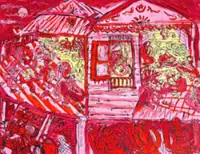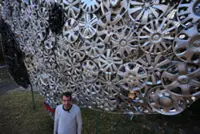A sculpture of 'The Little Prince' by Argentine artist Amanda Mayor (1929-2005) is seen at the San Carlos Castle gardens in Concordia, Entre Rios Province, Argentina. Photo: AFP
Deep in northern Argentina, a crumbling castle holds memories of a visit almost a century ago by Little Prince author Antoine de Saint-Exupery, who was captivated by the "strange" building and its quirky inhabitants.
A statue of the Little Prince - the main character of the whimsical tale - stands in the vast park outside the castle, where many Argentines believe Saint-Exupery drew inspiration for his classic novella which has been translated into more than 300 languages.





